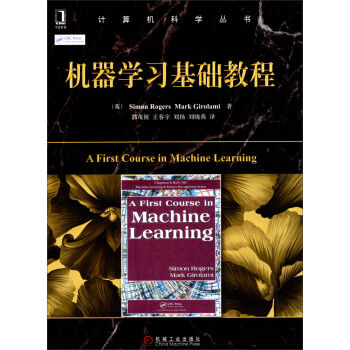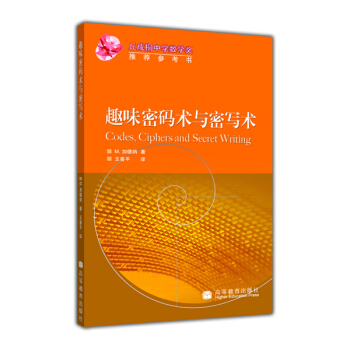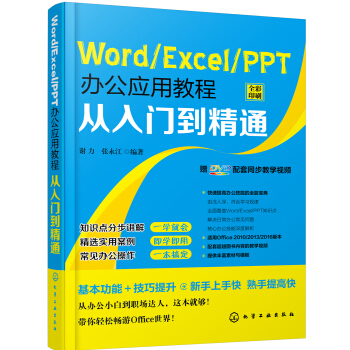![经典原版书库:计算机网络(英文版·第5版) [Computer Networks, Fifth Edition]](https://pic.windowsfront.com/10854761/8d81a8b8-308f-4ac3-83ed-f40ba01706f8.jpg)

具体描述
编辑推荐
《经典原版书库:计算机网络(英文版·第5版)》是国内外使用广泛的计算机网络经典教材。全书自下而上系统地介绍了计算机网络的基本原理,并给出了大量实例。
海报:
内容简介
《经典原版书库:计算机网络(英文版·第5版)》是全球具经典性的计算机网络教材,我国各高等院校也广泛采用此书作为计算机网络课程的基本教材。Tanenbaum教授以高深的理论造诣和丰富的实践经验,在书中对计算机网络的原理、结构、协议标准与应用等做了深入的分析与研究。全书按照网络协议模型(物理层、数据链路层、介质访问控制子层、网络层、传输层和应用层)’自底向上逐层讲述每一层所用的技术与协议标准,并给出大量实例。全书内容全面翔实,体系清晰合理叙述由简入繁、层层深入,自底向上方法也符合人类从底层到高层的认识规律,因此是公认的适合网络入门的教材。
随着计算机网络的发展,本版对相关内容进行了大量修订、更新和补充,具体更新内容如下:
●无线网络(802,12和802.16)。
●智能手机使用的3G网络。
●RFID和传感器网络。
●使用CDN进行内容分发。
●对等网络。
●实时媒体。
●网络电话。
●延迟容忍网络。
作者简介
AndrewS.Tanenbaum,国际知名的计算机科学家,著名的技术作家、教育冢和研冤看,ACM和IEEE两会高级会员,荷兰皇家艺术和科学院院士,荷兰阿姆斯特丹Vrije大学计算机科学系教授。他讲授计算机网络、操作系统和计算机组成等课程30多年,教学成果卓著,其所著的多部计算机科学方面的教材已成为该领域内的范本,得到学术界和教育界的广泛认可,多次获得ACM及其他学术组织颁发的各项荣誉,包括1994年ACMKarlV.Karlstrom杰出教育奖、1997年ACM计算机科学教育杰出贡献奖、2002年Texty卓越教材奖、第10届ACM操作系统原理研讨会杰出论文奖等,他还入选了《世界名人录》。DavidJ.Wetherall拥有美国麻省理工学院计算机科学博士学位,现为华盛顿大学西雅图分校计算机科学与工程系副教授。他的研究领域是网络系统,尤其是无线网络和移动计算、网络测量和Internet协议的设计、隐私和安全。
内页插图
目录
PREFACEABOUT THE AUTHORS
1 INTRODUCTION
1.1 USES OF COMPUTER NETWORKS
1.1.1 Business Applications
1.1.2 Home Applications
1.1.3 Mobile Users
1.1.4 Social Issues
1.2 NETWORK HARDWARE
1.2.1 Personal Area Networks
1.2.2 Local Area Networks
1.2.3 Metropolitan Area Networks
1.2.4 Wide Area Networks
1.2.5 Internetworks
1.3 NETWORK SOFI'WARE
1.3.1 Protocol Hierarchies
1.3.2 Design Issues for the Layers
1.3.3 Connection-Oriented Versus Connectionless Service
1.3.4 Service Primitives
1.3.5 The Relationship of Services to Protocols
1.4 REFERENCE MODELS
1.4.1 The OSI Reference Model,
1.4.2 The TCP/IP Reference Model
1.4.3 The Model Used in This Book
1.4.4 A Comparison of the OSI and TCP/IP Reference Models
1.4.5 A Critique of the OSI Model and Protocols
1.4.6 A Critique of the TCP/IP Reference Model
1.5 EXAMPLE NETWORKS
1.5,1 The Internet
1.5.2 Third-Generation Mobile Phone Networks
1.5.3 Wireless LANs: 802.11
1.5.4 RFID and Sensor Networks
1.6 NETWORK STANDARDIZATION
1.6,1 Who's Who in the Telecommunications World
1.6.2 Who's Who in the International Standards World
1.6.3 Who's Who in the Internet Standards World
1.7 METRIC UNITS
1.8 OUTLINE OF THE REST OF THE BOOK
1.9 SUMMARY
2 THE PHYSICAL LAYER
2.1 THE THEORETICAL BASIS FOR DATA COMMUNICATION
2.1.1 Fourier Analysis
2.1.2 Bandwidth-Limited Signals
2.1.3 The Maximum Data Rate of a Channel
2.2 GUIDED TRANSMISSION MEDIA
2.2.1 Magnetic Media
2.2.2 Twisted Pairs
2,2.3 Coaxial Cable
2.2.4 Power Lines
2.2.5 Fiber Optics
2.3 WIRELESS TRANSMISSION
2.3.1 The Electromagnetic Spectrum
2.3.2 Radio Transmission
2.3.3 Microwave Transmission
2.3.4 Infrared Transmission
2.3.5 Light Transmission
……
3 THE DATA LINK LAYER
4 THE MEDIUM ACCESS CONTROL SUBLAYER
5 THE NETWORK LAYER
6 THE TRANSPORT LAYER
7 THE APPLICATION LAYER
8 NETWORK SECURITY
9 READING LIST AND BIBLIOGRAPHY
精彩书摘
Before we start to examine the technical issues in detail, it is worth devotingsome time to pointing out why people are interested in computer networks andwhat they can be used for.After all, if nobody were interested in computer net-works,few of them would be built. We will start with traditional uses at com-panies,then move on to home networking and recent developments regardingmobile users, and finish with social issues.1.1.1 usiness Applications Most companies have a substantial number of computers. For example, acompany may have a computer for each worker and use them to design products,write brochures, and do the payroll.Initially, some of these computers may haveworked in isolation from the others, but at some point, management may havedecided to connect them to be able to distribute information throughout the com-pany.……
前言/序言
PREFACE
This book is now in its fifth edition. Each edition has corresponded to a different phase in the way computer networks were used. When the first edition appearedin 1980, networks were an academic curiosity. When the second edition appeared in 1988, networks were used by universities and large businesses. When the third edition appeared in 1996, computer networks, especially the Internet, had become a daily reality for millions of people. By the fourth edition, in 2003, wireless networks and mobile computers had become commonplace for accessing the Web and the Internet. Now, in the fifth edition, networks are about content distribution(especially videos using CDNs and peer-to-peer networks) and mobile phones are small computers on the Internet.
Among the many changes in this book, the most important one is the addition f Prof. David J. Wetheall as a co-author. David brings a rich background in networking,having cut his teeth designing metropolitan-area networks more than 20years ago. He has worked with the Internet and wireless networks ever since and is a professor at the University of Washington, where he has been teaching and doing research on computer networks and related topics for the past decade.
Of course, the book also has many changes to keep up with the: ever-changing world of computer networks. Among these are revised and new material on Wireless networks (802.12 and 802.16)
The 3G networks used by smart phones
RFID and sensor networks
Content distribution using CDNs
Peer-to-peer networks
Real-time media (from stored, streaming, and live sources)
Internet telephony (voice over IP)
Delay-tolerant networks
A more detailed chapter-by-chapter list follows.
Chapter 1 has the same introductory function as in the fourth edition, but the contents have been revised and brought up to date. The Internet, mobile phone networks, 802.11, and RFID and sensor networks are discussed as examples of computer networks. Material on the original Ethernet—with its vampire taps—has been removed, along with the material on ATM.
Chapter 2, which covers the physical layer, has expanded coverage of digital modulation (including OFDM as widely used in wireless networks) and 3G networks (based on CDMA). New technologies are discussed, including Fiber to the Home and power-line networking.
Chapter 3, on point-to-point links, has been improved in two ways. The material on codes for error detection and correction has been updated, and also includes a brief description of the modern codes that are important in practice (e.g., convolutional and LDPC codes). The examples of protocols now use Packet over SONET and ADSL. Sadly, the material on protocol verification has been removed as it is little used.
In Chapter 4, on the MAC sublayer, the principles are timeless but the technologies have changed. Sections on the example networks have been redone accordingly, including gigabit Ethernet, 802.11, 802.16, Bluetooth, and RFID.
Also updated is the coverage of LAN switching, including VLANs.
Chapter 5, on the network layer, covers the same ground as in the fourth edition.
. The revisions have been to update material and add depth, particularly for quality of service (relevant for real-time media) and internetworking. The sections on BGP, OSPF and CIDR have been expanded, as has the treatment of multicast routing. Anycast routing is now included.
Chapter 6, on the transport layer, has had material added, revised, and removed.
New material describes delay-tolerant networking and congestion control in general. The revised material updates and expands the coverage of TCP congestion control. The material removed described connection-oriented network layers, something rarely seen any more.
Chapter 7, on applications, has also been updated and enlarged. While material on DNS and email is similar to that in the fourth edition, in the past few years there have been many developments in the use of the Web, streaming media and content delivery. Accordingly, sections on the Web and streaming media have been brought up to date. A new section covers content distribution, including CDNs and peer-to-peer networks.
Chapter 8, on security, still covers both symmetric and public-key cryptography for confidentiality and authenticity. Material on the techniques used in practice, including firewalls and VPNs, has been updated, with new material on 802.11 security and Kerberos V5 added.
Chapter 9 contains a renewed list of suggested readings and a comprehensive bibliography of over 300 citations to the current literature. More than half of these are to papers and books written in 2000 or later, and the rest are citations to classic papers.
Computer books are full of acronyms. This one is no exception. By the time you are finished reading this one, the following should ring a bell: ADSL, AES, AJAX, AODV, AP, ARP, ARQ, AS, BGP, BOC, CDMA, CDN, CGI, CIDR, CRL, CSMA, CSS, DCT, DES, DHCP, DHT, DIFS, DMCA, DMT, DMZ, DNS,DOCSIS, DOM, DSLAM, DTN, FCFS, FDD, FDDI, FDM, FEC, FIFO, FSK,FTP, GPRS, GSM, HDTV, HFC, HMAC, HTTP, IAB, ICANN, ICMP, IDEA,IETF, IMAP, IMP, IP, IPTV, IRTF, ISO, ISP, ITU, JPEG, JSP, JVM, LAN,LATA, LEC, LEO, LLC, LSR, LTE, MAN, MFJ, MIME, MPEG, MPLS, MSC,MTSO, MTU, NAP, NAT, NRZ, NSAP, OFDM, OSI, OSPF, PAWS, PCM, PGP,PIM, PKI, POP, POTS, PPP, PSTN, QAM, QPSK, RED, RFC, RFID, RPC, RSA,RTSP, SHA, SIP, SMTP, SNR, SOAP, SONET, SPE, SSL, TCP, TDD, TDM,TSAP, UDP, UMTS, URL, VLAN, VSAT, WAN, WDM, and XML. But don’t worry. Each will appear in and be carefully defined before it is used. As a fun test, see how many you can identify before reading the book, write the number in the margin, then try again after reading the book.
To help instructors use this book as a text for courses ranging in length from quarters to semesters, we have structured the chapters into core and optional material.
The sections marked with a ‘‘*’’ in the table of contents are the optional ones. If a major section (e.g., 2.7) is so marked, all of its subsections are optional.
They provide material on network technologies that is useful but can be omitted from a short course without loss of continuity. Of course, students should be encouraged to read those sections as well, to the extent they have time, as all the material is up to date and of value.
The following protected instructors’ resource materials are available on the publisher’s Web site at . For a username and password, please contact your local Pearson representative.
Solutions manual
PowerPoint lecture slides
Resources for students are available through the open-access Companion Web site link on , including Web resources, links to tutorials, organizations, FAQs, and more Figures, tables, and programs from the book Steganography demo Protocol simulators
Many people helped us during the course of the fifth edition. We would especially like to thank Emmanuel Agu (Worcester Polytechnic Institute), Yoris Au (University of Texas at Antonio), Nikhil Bhargava (Aircom International, Inc.),Michael Buettner (University of Washington), John Day (Boston University),Kevin Fall (Intel Labs), Ronald Fulle (Rochester Institute of Technology), Ben Greenstein (Intel Labs), Daniel Halperin (University of Washington), Bob Kinicki (Worcester Polytechnic Institute), Tadayoshi Kohno (University of Washington),Sarvish Kulkarni (Villanova University), Hank Levy (University of Washington),Ratul Mahajan (Microsoft Research), Craig Partridge (BBN), Michael Piatek (University of Washington), Joshua Smith (Intel Labs), Neil Spring (University of Maryland), David Teneyuca (University of Texas at Antonio), Tammy VanDegrift (University of Portland), and Bo Yuan (Rochester Institute of Technology),for providing ideas and feedback. Melody Kadenko and Julie Svendsen provided administrative support to David.
Shivakant Mishra (University of Colorado at Boulder) and Paul Nagin (Chimborazo
Publishing, Inc.) thought of many new and challenging end-of-chapter problems. Our editor at Pearson, Tracy Dunkelberger, was her usual helpful self in many ways large and small. Melinda Haggerty and Jeff Holcomb did a good job of keeping things running smoothly. Steve Armstrong (LeTourneau University) prepared the PowerPoint slides. Stephen Turner (University of Michigan at Flint) artfully revised the Web resources and the simulators that accompany the text. Our copyeditor, Rachel Head, is an odd hybrid: she has the eye of an eagle and the memory of an elephant. After reading all her corrections, both of us wondered how we ever made it past third grade.
Finally, we come to the most important people. Suzanne has been through this 19 times now and still has endless patience and love. Barbara and Marvin now know the difference between good textbooks and bad ones and are always an inspiration to produce good ones. Daniel and Matilde are welcome additions to our family. Aron is unlikely to read this book soon, but he likes the nice pictures on page 884 (AST). Katrin and Lucy provided endless support and always managed to keep a smile on my face.
Thank you (DJW).
ANDREW S. TANENBAUM
DAVID J.WETHERALL
用户评价
坦白说,我选择这本书很大程度上是因为它“经典”的名头,以及它在计算机网络领域长期以来积累的声誉。作为一名有一定工作经验的从业者,我深知理论基础的重要性。我曾经在处理一些复杂的网络问题时,感到力不从心,原因就是缺乏对底层原理的深刻理解。这本书的第五版,意味着它已经经过了几代的迭代和完善,内容上应该是非常成熟和全面的。我特别感兴趣的是它如何处理当前快速发展的网络技术,比如云计算、物联网、5G等,是否能提供一个清晰的视角来理解这些新技术的网络支撑。我希望这本书能够帮助我梳理现有的知识体系,填补那些模糊不清的知识盲点,并且能够提供一些前瞻性的指导,让我能够更好地适应未来的技术发展趋势。我对其中可能包含的大量图示和案例分析抱有很高的期望,因为这有助于我更直观地理解抽象的概念。
评分从我个人的阅读习惯来说,我更偏爱那种能够引发思考、激发探索的书籍。这本书的标题“经典原版书库”本身就蕴含着一种历史的沉淀和学术的严谨,这让我对它的内容质量充满了信心。我一直认为,要真正理解一个领域,就必须回溯其发展的源头,学习那些奠定基石的经典著作。这本《计算机网络》(英文版·第5版)无疑扮演了这样的角色。虽然我不是计算机专业的学生,但工作以来接触到的各种与网络相关的问题,促使我下定决心要系统性地学习。我希望这本书不仅仅是知识的堆砌,更能提供一种解决问题的思路和分析框架。例如,在学习网络协议时,我希望它能清晰地解释为什么会有这样的设计,它解决了哪些现实中的挑战。我也希望能从中学习到一些评估网络性能、诊断网络故障的方法论。总而言之,我期待它能够以一种启发式的方式,让我不仅“知道”是什么,更能“理解”为什么,从而真正掌握计算机网络的精髓,并在实际工作中举一反三。
评分这本书的封面设计就给我一种沉静而专业的感受,深邃的蓝色背景搭配简洁明了的标题,一下子就抓住了我的眼球。作为一个对计算机网络领域充满好奇的初学者,我一直希望能找到一本能够系统讲解网络基础知识的权威教材。在翻阅了市面上不少书籍后,这本《计算机网络》(英文版·第5版)以其经典的名号吸引了我。我特别看重的是它的“原版”属性,相信它能更真实地传递作者最原始的思考和最严谨的论证,避免了二次翻译中可能出现的理解偏差或信息失真。虽然我还没有开始深入阅读,但仅从其厚重的体量和一丝不苟的排版,我就预感这会是一次充实的学习旅程。我期待它能够从最基础的概念讲起,循序渐进地引导我理解TCP/IP协议栈的精髓,掌握各种网络设备的原理,以及深入了解数据传输的底层机制。我对其中可能涉及到的经典案例和前沿技术展望尤为期待,希望它能为我构建一个坚实的理论基础,也为我未来在网络安全、分布式系统等相关领域的探索打下良好的开端。
评分作为一名对技术充满热情的业余爱好者,我一直在寻找能够系统提升自己网络知识水平的资源。这本《计算机网络》(英文版·第5版)的出现,无疑正中我的下怀。我非常喜欢英文原版的书籍,因为它们能最直接地传递作者的思想,并且在专业术语的翻译和理解上,原版往往是最准确的。我对这本书的“经典”二字非常看重,这意味着它不仅仅是一本教材,更是一部可以反复研读、从中汲取智慧的宝藏。我期待它能够带领我深入了解网络的各个层面,包括但不仅限于各种数据传输协议的原理、路由选择的算法、拥塞控制的机制,以及网络安全的基本概念。我希望能通过这本书,能够更好地理解互联网是如何运作的,并且能够为自己搭建一些小型的网络实验,比如配置路由器、模拟网络拓扑等。我相信这本书能够为我的学习和实践提供坚实的理论指导,让我对网络世界的理解更上一层楼。
评分当我看到这本书的书名时,一种熟悉感油然而生。我知道“计算机网络”是计算机科学中一个至关重要的组成部分,而“经典原版书库”则保证了其内容的权威性和深度。我一直认为,学习计算机技术,尤其是像网络这样基础且广泛的学科,绕不开那些被时间检验过的经典著作。虽然我还没有开始翻阅,但我可以想象这本书的语言一定是精炼而准确的,它的逻辑一定是严谨而清晰的。我希望它能帮助我建立起一个完整的计算机网络知识框架,从物理层到应用层,每一个环节都能够被细致地阐述。我特别期待能够深入理解OSI七层模型和TCP/IP四层模型之间的关系和区别,以及各种核心协议(如HTTP, FTP, DNS, TCP, UDP, IP)的工作机制。对于我来说,这本书不仅仅是学习工具,更像是一次与领域内大师的对话,一次对网络世界奥秘的探索之旅。
评分全英文版,内容清晰,帮助很大
评分惊喜惊喜地都哦空洞洞豆豆哦系xoxo
评分字迹清晰清楚易懂深入浅出
评分京东自己的送货都是很快的。
评分考研参考书籍,对比学习一下相关知识
评分有一本中文的啦。趁特价买本原版
评分很好的书,哈哈哈哈哈哈
评分经典的好书,和自顶向下配合着看
评分此用户未填写评价内容
相关图书
本站所有内容均为互联网搜索引擎提供的公开搜索信息,本站不存储任何数据与内容,任何内容与数据均与本站无关,如有需要请联系相关搜索引擎包括但不限于百度,google,bing,sogou 等,本站所有链接都为正版商品购买链接。
© 2026 windowsfront.com All Rights Reserved. 静流书站 版权所有

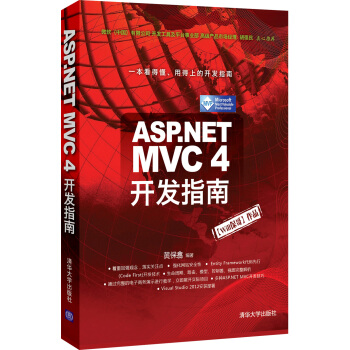
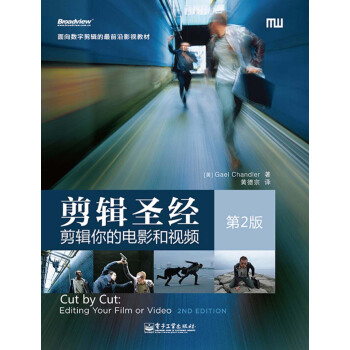
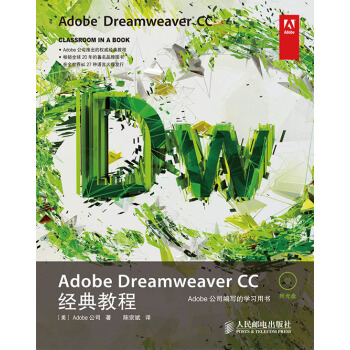
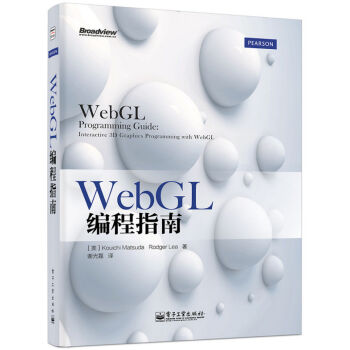
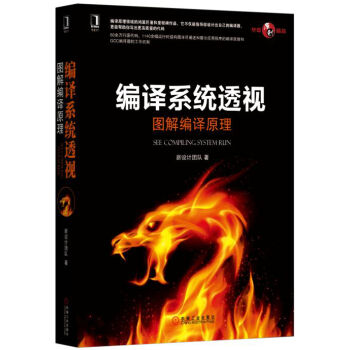
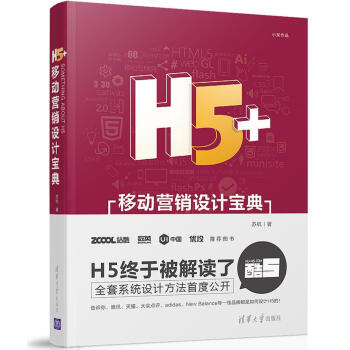
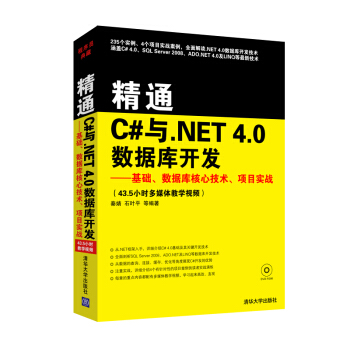
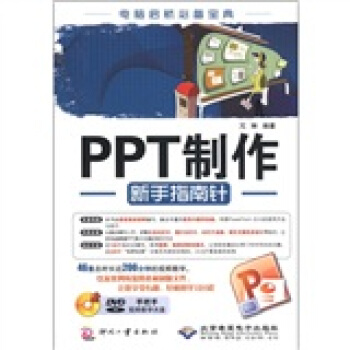
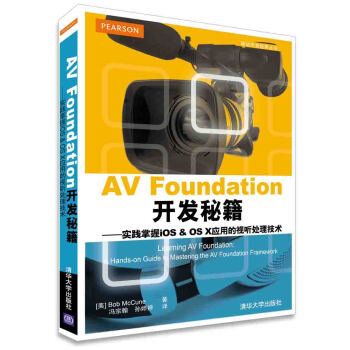
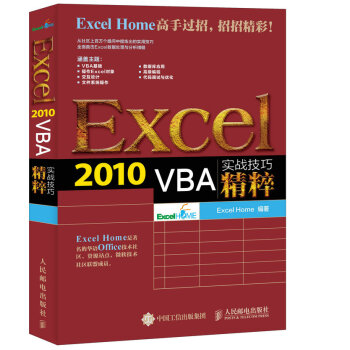
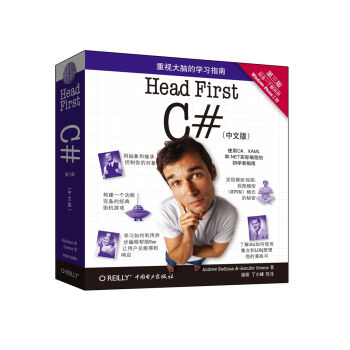
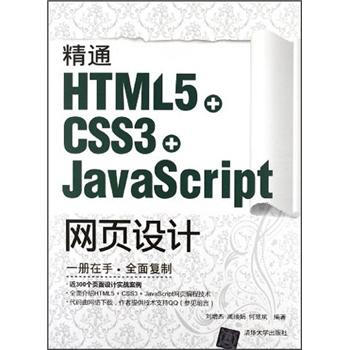
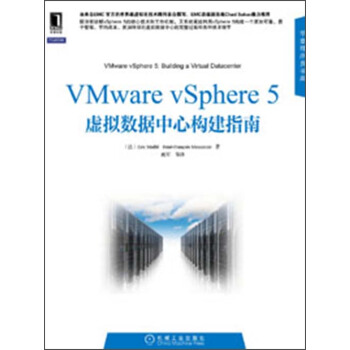
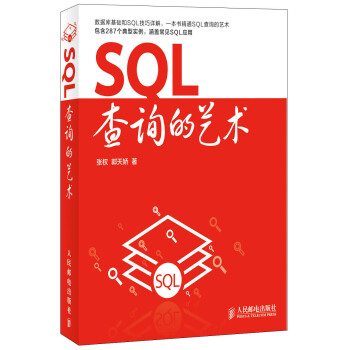
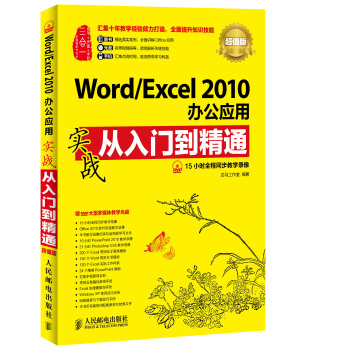
![HTML5移动Web开发实战 [HTML5 Mobile Development Cookbook] pdf epub mobi 电子书 下载](https://pic.windowsfront.com/11241807/rBEhVVGyyF8IAAAAAAU1S9S3sREAAAFegAu-xkABTVj221.jpg)
